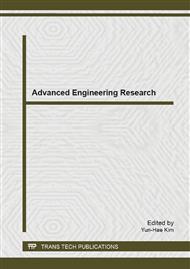p.871
p.875
p.879
p.883
p.887
p.891
p.895
p.900
p.905
Optimization of Proliferation Conditions of Recombinant Escherichia coli BL21(DE3)/pET-28b(+)-aroGM150
Abstract:
Applying Escherichia coli (E. coli) for fermentation is a very common technology. However combined with genetic engineering techniques to construct the recombinant Escherichia coli and study their growth characteristics has become the hot spot now. The recombinant Escherichia coli BL21 (DE3) /pET-28baroGM150 had been constructed by our laboratory in the previous experiment. And the purpose of this study was to optimize the proliferation conditions of Escherichia coli BL21 (DE3) /pET-28baroGM150. In order to make the recombinant Escherichia coli grow stable under suitable conditions, using the density of bacteria and plasmid stability as indexes, three factors were tested including temperature, initial pH and loading volume. And the results indicated that the optimal proliferation temperature of the recombinant strain was 30°C, initial pH value was 6.5, loading volume was 150 mL medium of 1000 mL bottles.
Info:
Periodical:
Pages:
887-890
Citation:
Online since:
April 2014
Authors:
Keywords:
Price:
Сopyright:
© 2014 Trans Tech Publications Ltd. All Rights Reserved
Share:
Citation:


